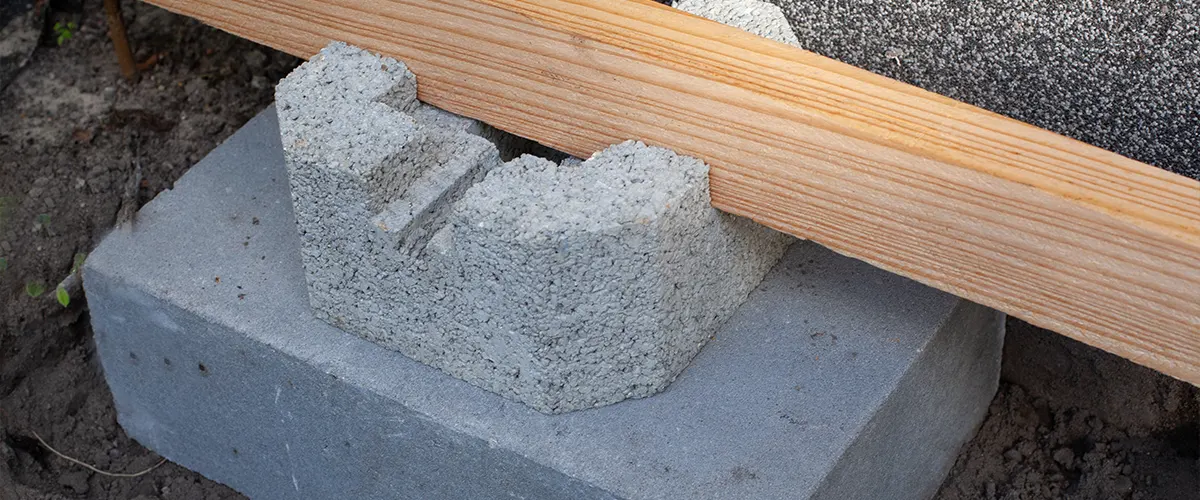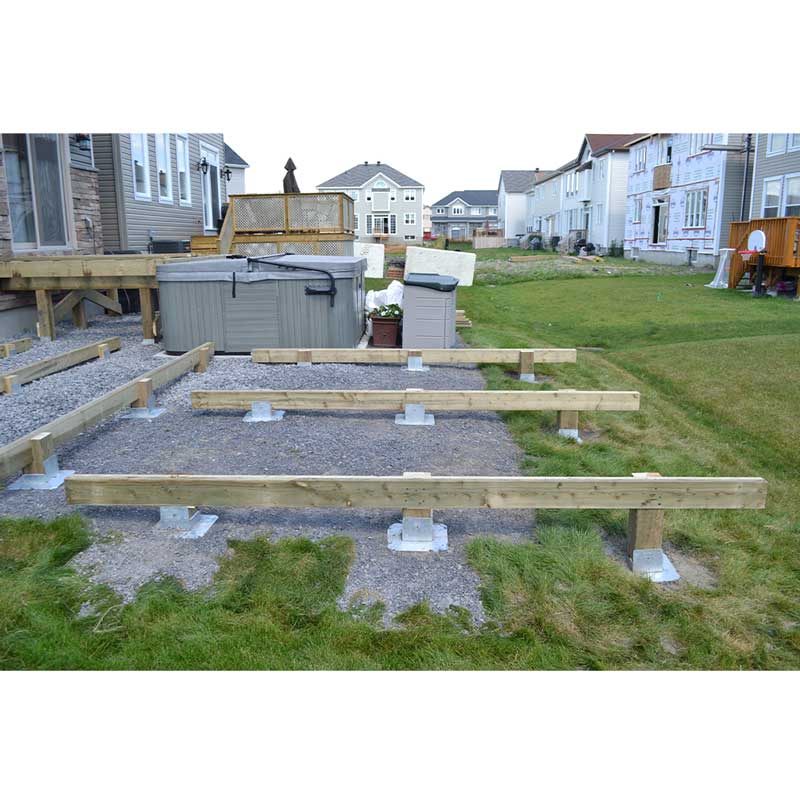Professional Tips for Setting Up Deck Footings to Support Your Outdoor Room
When it comes to constructing a deck, one of the most important elements to take into consideration is the setup of appropriate footings. These footings are the foundation upon which your exterior space will certainly rest, supplying stability and assistance for years to come. What specifically does it take to mount deck footings appropriately?
Value of Appropriate Deck Footings
Appropriate deck footings are necessary for guaranteeing the security and longevity of your exterior area. When creating a deck, it is critical to focus on the foundation on which it will certainly rest. Deck footings give the essential assistance for the entire framework and assistance disperse the weight evenly - Deck Footings. Without strong and appropriately installed footings, your deck might come to be unsteady, resulting in safety and security threats and pricey fixings.

In enhancement to security, proper deck grounds additionally add to the long life of your outside space (Deck Footings). Footings that are made and created to stand up to the elements and soil problems in your area will certainly help stop the deck from settling or shifting over time. By making certain the footings are effectively sized and mounted, you can minimize the danger of damage to the deck structure, extending its lifespan and lowering the requirement for pricey repair work or substitutes

Selecting the Right Kind Of Grounds
When selecting the ideal kind of grounds for your deck, it is very important to take into consideration elements such as dirt problems, local building regulations, and the general style of your exterior room. The type of footing you select will play a critical duty in ensuring the stability and durability of your deck.
One usual type of ground is the concrete footing. Concrete footings are suitable for the majority of dirt conditions and provide outstanding support for decks.
In some cases, you might need to use specialized footings, such as heap footings or deep foundations, if you are constructing a multi-level or huge deck. These grounds are created to disperse the weight of the deck over a larger location, making sure security and protecting against sinking or settling.
Before picking a type of footing, it is vital to get in touch with local building ordinance and laws to make sure compliance. Additionally, think about the design and planned use your outside area. Elements such as the size, form, and load-bearing needs of your deck will affect the kind of footing that is most suitable.
Preparing the Ground for Footing Setup
To correctly prepare the ground for footing installment, it is very important to analyze the soil problems and take necessary actions to guarantee stability and longevity of the deck. The initial step is to dig deep into the area where the footings will be mounted. The deepness of the excavation will rely on the frost line in your region and the certain requirements of the deck design. It is vital to eliminate any plants, rocks, or debris from the excavation to make sure a solid structure.
Once the area has been excavated, the following action is to compact the dirt. This can be done using a plate compactor or by using a hand tamper. Compacting the dirt helps to remove any type of spaces or air pockets, which can cause working out and instability gradually.
After compacting the dirt, it is essential to lay a layer of crushed rock or smashed rock at the end of the click this excavation. This will certainly give drainage and assistance to stop water from merging around the grounds, which can bring about disintegration and instability.
Step-by-Step Overview to Installing Deck Footings
After effectively preparing the ground for footing setup, the next step is to begin the process of setting up deck footings. This step-by-step guide will offer you with a clear understanding of how to set up deck grounds for your exterior area.
Identify the place: Start by noting the settings of the deck grounds using risks and string. Make certain that the areas straighten with the style and format of your deck.
Dig the openings: Make use of a message hole miner or an auger to dig the openings for the footings. The deepness and size of the holes should be in accordance with neighborhood building codes and the particular needs of your deck design.
Degree the openings: Use a degree to ensure that the holes are dug to the appropriate depth and are level with each other. (Deck Footings)
Include crushed rock: Location a layer of gravel at the bottom of each opening to boost drainage and avoid the timber from decomposing.
Place the footings: Put the grounds right into the openings, seeing to it they are level and plumb. Make use of a level and a gauging tape to guarantee accuracy.
Secure the footings: Pour concrete into the holes around the grounds, filling them to the top. Make use of a blog post level to make sure the grounds stay level as the concrete collections.
Permit time for treating: Allow the concrete cure according to the supplier's directions before continuing with the deck building and construction.
Common Errors to Prevent During Footing Installation
One essential element to take into consideration during the installation of deck footings is staying clear of common errors that can jeopardize the security and longevity of your outside area. While deck grounds might appear like a simple and easy part of the construction procedure, overlooking specific variables can cause expensive repair services and prospective safety and security risks down the line.

Furthermore, disregarding to mount correct drain measures can cause water to gather around the footings, leading to rot, decay, and the eventual weakening of the deck's structure. Making use of the incorrect type of footing product or failing to adequately safeguard the grounds can endanger their architectural honesty.
To stay clear of these mistakes, it is crucial to seek advice from an expert or comply with market standards to make certain proper footing setup. By doing so, you can guarantee the stability and long life of your exterior area, providing a enjoyable and safe environment for years ahead.
Final Thought
To conclude, installing proper deck grounds investigate this site is important for the stability and longevity of your outside room. By picking the appropriate type of grounds and adequately preparing the ground, you can make certain a solid structure for your deck. Complying with a step-by-step overview and avoiding usual mistakes throughout footing installation will certainly further boost the sturdiness and safety of your deck.
Appropriate deck grounds are vital for guaranteeing the stability and longevity of your outdoor area. The grounds offer as a link in between the deck and the ground, enabling the weight of the deck additional resources and its owners to be dispersed equally into the soil.One common kind of ground is the concrete ground. Put the footings: Position the footings into the holes, making sure they are level and plumb. Safeguard the grounds: Pour concrete into the holes around the footings, filling them to the top.